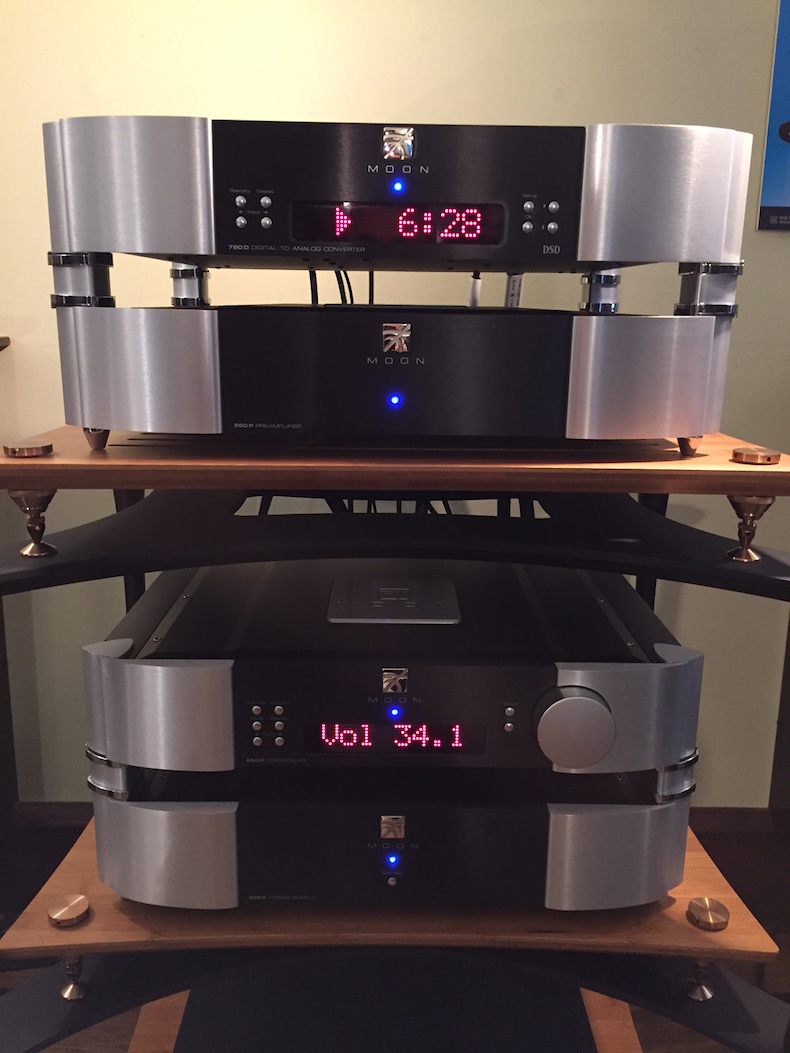Moon 888 monoblocs to launch in UK for £125,000 a pair
We first saw these extraordinary amplifiers at CES 2017, and were so impressed we awarded them a Stars of CES accolade. Now they are coming to the UK.

"This isn't just another monobloc amplifier, it's a statement." So says Canadian high-end hi-fi manufacturer Moon by Simaudio. Its latest Moon 888 monobloc is "state-of-the-art taken to the extreme", and who are we to argue.
At a not inconsiderable £125,000 per pair, you need deep pockets to afford this slice of hi-fi heaven. And weighing in at 136Kg each, you certainly wouldn't want to lift one by yourself.
Power is rated at 888W (hence the name). This is backed by a very large power supply that, coupled with an 8kW capacity output section on giant cast-aluminium heatsinks, is designed to "drive any load with complete effortlessness". It's unlikely most users will ever need to use the full power the 888 is capable of delivering.

Now the 888s are coming to the UK courtesy of Renaissance Audio, Moon's distributor based in Edinburgh. At the UK press launch in Leith, Scotland we were fortunate enough to hear them in full flow, driving a £110,000 pair of YG Acoustics Sonja speakers.
Costa Koulisakis, Moon's vice-president of customer experience, was on hand to explain more about the thinking behind the project.
"The triple eights were a labour of love, something we'd wanted to do for years," says Costa. "Some of our rivals have launched crazy, high-end audio products and we wanted to put everything we've learned over the last 37 years into one product."
The latest hi-fi, home cinema and tech news, reviews, buying advice and deals, direct to your inbox.
Moon took its existing 880M monoblocs (which sell for £32,500 a pair) and gave its engineers free rein and a limitless budget to take "amplifier design to the extreme".

As you'd expect of such a statement product, build quality is exemplary, with tolerances set at 1/1000th of an inch. The large heatsinks, which are a single piece of specially cast aluminium, are manufactured using the same processes as high-performance racing engines.
Moon says the all-aluminium chassis assures exceptional heat dissipation and thermal efficiency. Each of the fully balanced monoblocs has two transformers in it, which are housed within a chrome enclosure. Rhodium-plated copper binding posts are used for the speaker connections, and there are standard RCA and balanced XLR inputs for connecting source components.

For the demonstration we heard Moon used its 780D DAC/streamer, 850P preamp, 850P controller and separate 820S power supply. Special cables were made for the system by Studio Connections and support racks by Quadraspire.
"Above all else the amps are designed to reproduce music as accurately as possible," says Costa. "Even if the quality of the music signal is very poor, it should not be altered to disguise that. These amps are ruthlessly revealing of the source kit and the quality of the recording."
The demo pair of 888s are currently the only pair in the world (and were the same ones we saw in Las Vegas), but manufacturing of production samples will begin next month.
In the UK existing Moon Evolution owners will be offered a credit worth the full value of their current Moon equipment against the £125,000 purchase price of the 888s. In the US, the triple eights will sell for $125,000 before sales tax. They come with a 10-year warranty in all regions.
Andy is Global Brand Director of What Hi-Fi? and has been a technology journalist for 30 years. During that time he has covered everything from VHS and Betamax, MiniDisc and DCC to CDi, Laserdisc and 3D TV, and any number of other formats that have come and gone. He loves nothing better than a good old format war. Andy edited several hi-fi and home cinema magazines before relaunching whathifi.com in 2008 and helping turn it into the global success it is today. When not listening to music or watching TV, he spends far too much of his time reading about cars he can't afford to buy.

